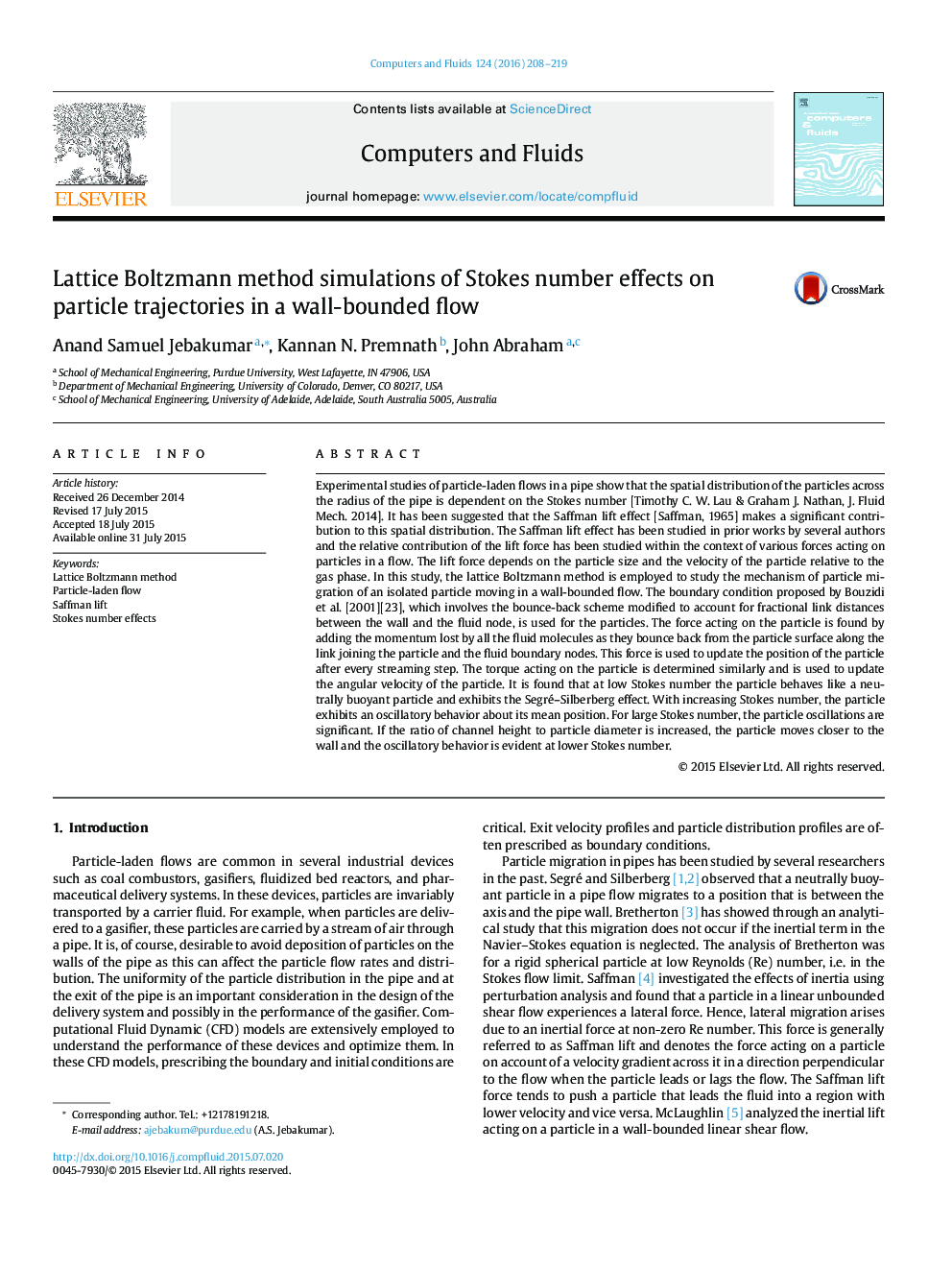| کد مقاله | کد نشریه | سال انتشار | مقاله انگلیسی | نسخه تمام متن |
|---|---|---|---|---|
| 768100 | 1462686 | 2016 | 12 صفحه PDF | دانلود رایگان |

• The mechanism of migration of an isolated particle in channel flow is studied.
• The effect of particle Stokes (St) number on its motion is examined.
• At low St number, the particle exhibits the Segré–Silberberg effect.
• At high St number, the particle exhibits an oscillatory behavior.
• Saffman lift, Magnus lift and wall effects influence the cross-stream motion.
Experimental studies of particle-laden flows in a pipe show that the spatial distribution of the particles across the radius of the pipe is dependent on the Stokes number [Timothy C. W. Lau & Graham J. Nathan, J. Fluid Mech. 2014]. It has been suggested that the Saffman lift effect [Saffman, 1965] makes a significant contribution to this spatial distribution. The Saffman lift effect has been studied in prior works by several authors and the relative contribution of the lift force has been studied within the context of various forces acting on particles in a flow. The lift force depends on the particle size and the velocity of the particle relative to the gas phase. In this study, the lattice Boltzmann method is employed to study the mechanism of particle migration of an isolated particle moving in a wall-bounded flow. The boundary condition proposed by Bouzidi et al. [2001][23], which involves the bounce-back scheme modified to account for fractional link distances between the wall and the fluid node, is used for the particles. The force acting on the particle is found by adding the momentum lost by all the fluid molecules as they bounce back from the particle surface along the link joining the particle and the fluid boundary nodes. This force is used to update the position of the particle after every streaming step. The torque acting on the particle is determined similarly and is used to update the angular velocity of the particle. It is found that at low Stokes number the particle behaves like a neutrally buoyant particle and exhibits the Segré–Silberberg effect. With increasing Stokes number, the particle exhibits an oscillatory behavior about its mean position. For large Stokes number, the particle oscillations are significant. If the ratio of channel height to particle diameter is increased, the particle moves closer to the wall and the oscillatory behavior is evident at lower Stokes number.
Journal: Computers & Fluids - Volume 124, 2 January 2016, Pages 208–219